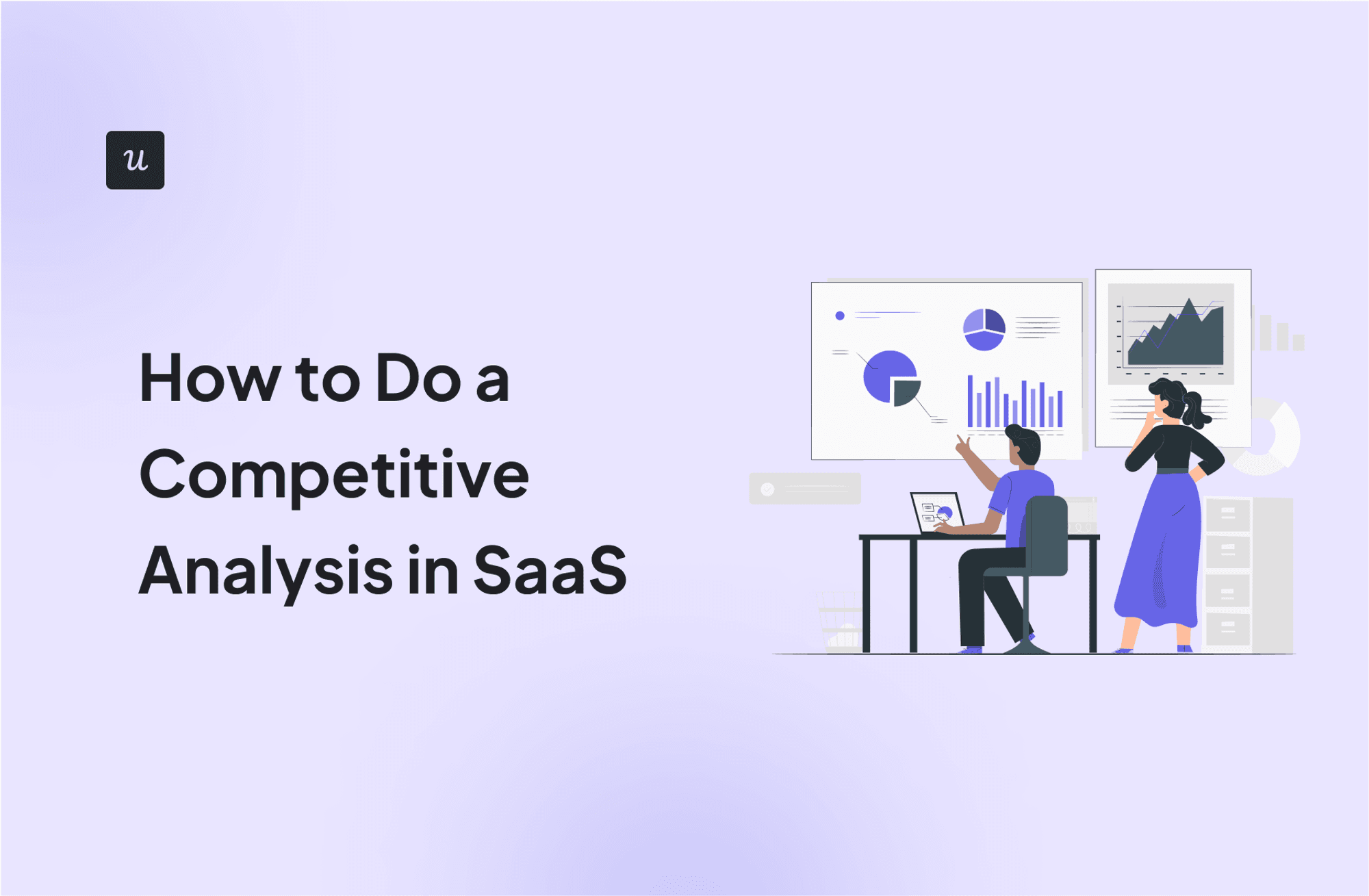
Whether you’re launching a new product or refining your existing offering, a competitive analysis will equip you with the insights needed to make data-driven product improvements, outsmart your competitors, and better serve your customers.
In this guide, we’ll walk you through the key steps to conduct a comprehensive competitive analysis in SaaS, giving you the tools to turn market knowledge into a strategic advantage.
Try Userpilot Now
See Why 1,000+ Teams Choose Userpilot

What is a competitive analysis?
A competitive analysis is a strategic process of evaluating the market landscape and identifying opportunities for growth.
It involves digging into what your competitors are doing well, where they’re struggling, how they market themselves, and interact with customers.
Why should you conduct a competitor analysis?
If you’re unsure about dedicating time and resources to studying your competitors, remember that it offers a comprehensive understanding of the market landscape and your position within it.
Here are three key reasons you should do a competitive analysis:
- Identify your differentiators: A competitive analysis helps you pinpoint what makes your product stand out from others. This distinction becomes the core of your value proposition and draws in customers who are specifically looking for what you provide.
- Set benchmarks for success: Analyzing your competitors’ performance allows you to establish realistic benchmarks for your own success. Every business has its unique journey, but comparing yourself with other established brands in the industry helps understand if you are moving in the right direction.
- Understand your target audience better: Competitor analysis provides insights into your customers’ preferences and pain points by examining what they enjoy, dislike, and criticize about competing brands.
How to do a competitive analysis in 7 steps
To effectively conduct a competitive analysis in SaaS, you need a structured approach that encompasses different steps.
Here’s a detailed breakdown of each step:
List your indirect and direct competitors
Begin by examining your business’s core values, objectives, and offerings. This will help you identify other brands that potential customers might pick over yours.
Then, use different digital channels to dive deeper. You can start of by typing a relevant keyword to your brand into Google. For example, if you are offering an analytics tool, search the term “product analytics” and in the results, you can see domains trying to rank for that keyword, which are most likely your competitors.
If you have existing customers, you can collect feedback from them and understand what services they consider alternatives to yours. You can determine this with single-question stories that ask what products they considered before choosing yours.

Analyze your competitor’s product and features
Examine in detail the functionalities they offer and how they address customer needs.
After that, compare them with your own offering to spot gaps and opportunities for enhancement.
In SaaS, this also means analyzing competitors’ user interface and user experience.

Assess your competitor’s marketing strategies
Next, study how your competitors market their products.
This involves evaluating their messaging, content marketing efforts, social media presence, SEO strategies, and paid advertising campaigns.
The ultimate goal is to identify any patterns in their marketing activities, such as seasonal promotions or content themes, and assess the effectiveness of these efforts.
This will help you understand what attracts customers to your competitors and how you can differentiate your marketing approach.
Evaluate your competitor’s pricing strategy
Analyze your competitors’ pricing models to understand their approach to monetization.
Look into their pricing tiers, freemium options, discounts, and bundling strategies. Assess whether they are targeting different market segments with different pricing plans and how they communicate value at each price point.
Understand the reasons behind their pricing decisions – whether they focus on premium pricing to convey exclusivity or competitive pricing to capture more market share.
Conduct a SWOT analysis
Perform a SWOT (Strengths, Weaknesses, Opportunities, Threats) analysis for each competitor. Identify their internal strengths and weaknesses, such as product quality, customer support, or market reputation.
Analyze external opportunities, like emerging markets or technological advancements, and threats, such as new entrants or changing regulations.
This analysis will help you understand your competitors’ vulnerabilities and strengths, allowing you to identify where you can outperform them.

Identify your place in the market landscape
Use the data gathered to determine your positioning within the market. Are you a market leader, challenger, niche player, or new entrant?
Understand where you stand in terms of market share, customer base, and product maturity compared to your competitors.
Define your unique value proposition by pinpointing what makes your product stand out. This will help you align your product development, marketing, and sales strategies to strengthen your position in the market.
Create a competitive analysis report
Highlight key insights, opportunities, and threats identified during your research. Use visuals like graphs, charts, and tables to make the data easier to digest.
A well-structured report will serve as a valuable reference for your entire team, guiding strategic decision-making and ensuring that everyone is aligned on your competitive position and goals.

Competitive analysis examples from popular brands
Now, let’s have a look at some real-world reports so you get a better idea of what it entails.
Slack competitor analysis
The competitor analysis report for Slack starts with the target audience, as team communication platforms cater to a broad market landscape and thus have plenty of indirect competitors. Specifically, Slack competes with other freemium communication tools like Zoom, Google Meet, and MS Teams.
You’ll also see that Slack’s premium plans are in the mid-range for freemium communication tools, its features are channel-based rather than video-centric like its competitors, and it takes a product-led growth approach rather than relying on brand recognition or cross-selling.
Finally, its main threats consist of competing platforms and privacy concerns.

Monday competitor analysis
With the exception of Wrike, most of Monday’s competitors — such as Asana and ClickUp — target teams of all sizes. However, Monday’s per-user pricing is cheaper than most other project management tools (except for ClickUp).
While most of the competitors have multiple view options, Monday’s USP stems from its intuitive interface. However, its higher pricing and expansive features could make the platform too expensive or confusing for smaller teams.
Lastly, ClickUp’s cheaper entry-level pricing ($5/user/month) threatens Monday’s pricing strategy.

Salesforce competitor analysis
Unlike other CRM platforms, Salesforce focuses exclusively on large enterprises rather than SMBs. Despite that, its entry-level plan is still cheaper than competitors at just $25/user/month — but Salesforce does lack a freemium version.
While other CRMs rely on inbound marketing and content to acquire customers, Salesforce reaches its enterprise clientele directly through account-based marketing (ABM) along with large-scale industry events that cement the platform as a market leader.
Last but not least, its main threat comes from disruptive startups that are more agile and innovative.

Conclusion
The insights you uncover from competitor research will help you keep your competitive edge, expand your market presence, and ensure that customers don’t switch to other products that aim to solve the same problem.
If you want to start gathering information without writing a single line of code, then it’s time to get your free Userpilot demo today!







